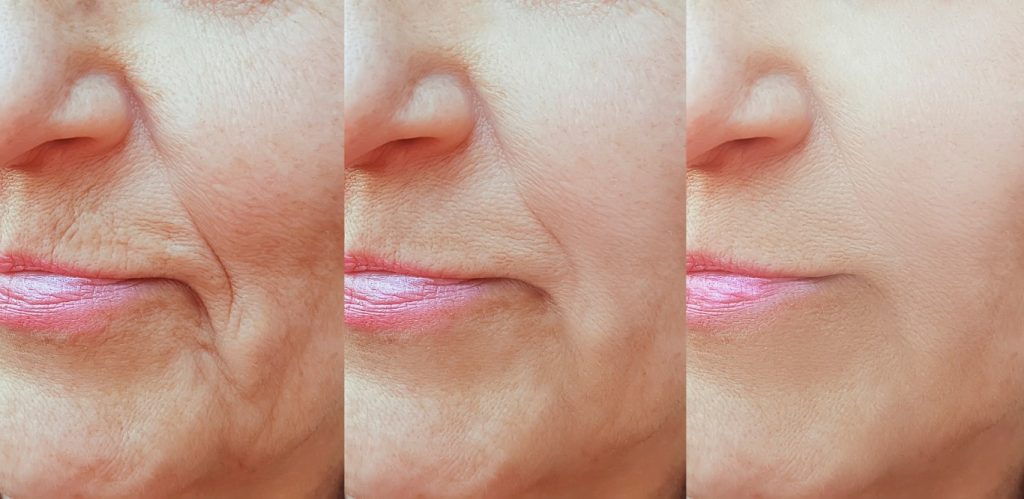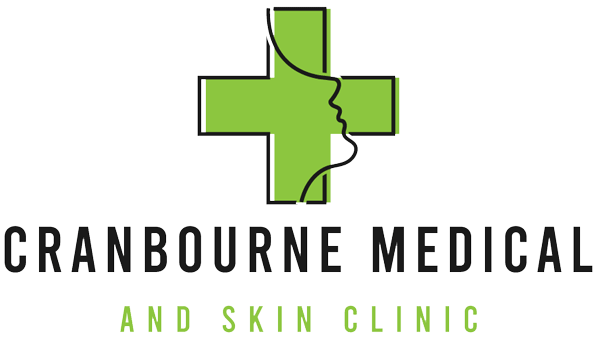
Thread lifts are gaining traction as a popular alternative to traditional cosmetic procedures. They offer noticeable results with minimal downtime, making them an attractive choice for those looking to enhance their appearance without the commitment of surgery.
When comparing thread lifts to options like facelifts or fillers, it’s vital to understand how each method addresses skin laxity and volume loss differently. Each procedure brings unique benefits tailored to specific concerns, allowing individuals to choose based on their desired outcomes and recovery preferences.
What is a Thread Lift?
A thread lift is a minimally invasive cosmetic procedure designed to lift and tighten sagging skin. It involves the use of special threads inserted into the skin, which stimulate collagen production while providing immediate support.
Unlike traditional facelifts, a thread lift requires no extensive surgery or long recovery time. Patients often seek this option for its natural-looking results and quick procedure duration, making it an appealing choice for those looking to refresh their appearance without drastic measures..
As the body heals, the threads dissolve over time, leaving behind natural-looking results. This process enhances firmness and elasticity in treated areas without extensive downtime or scarring, making it an attractive option for those seeking subtle rejuvenation.
Thread Lift vs. Facelift
One of the most common comparisons is between thread lifts and traditional facelifts. While both aim to lift sagging skin and rejuvenate the face, they are fundamentally different in terms of approach, longevity, and invasiveness.
Thread Lift
- Non-surgical: A thread lift is a minimally invasive procedure. Threads are inserted beneath the skin using a needle, which then anchor and lift the skin, helping contour the face and stimulate collagen production over time. The threads dissolve naturally over several months.
- Downtime: Recovery is much faster compared to a facelift. Patients can often resume normal activities within a few days, although mild swelling or bruising might persist for a week.
- Results: The lifting effect of a thread lift is more subtle compared to a facelift. It’s ideal for individuals with mild to moderate sagging in areas like the cheeks, jawline, or neck.
- Longevity: Results typically last between 12 and 24 months, depending on the type of thread used (PDO, PLA, or PCL).
- Cost: A thread lift is significantly more affordable than a facelift, typically costing between £1,000 and £3,000 depending on the complexity of the procedure.
Facelift
- Surgical: A facelift is a full surgical procedure that removes excess skin, tightens underlying muscles, and repositions the tissues for a more dramatic and long-lasting lift.
- Downtime: Recovery from a facelift can take several weeks. Bruising, swelling, and discomfort are common, and patients often need 2-4 weeks before they can resume regular activities.
- Results: Facelifts provide more dramatic and longer-lasting results, often lasting up to 10 years. It’s most effective for those with significant sagging and deep wrinkles.
- Longevity: A facelift offers permanent improvement in the sense that it removes excess skin. However, natural ageing continues, so results can gradually diminish over time.
- Cost: A facelift is more expensive, often ranging from £7,000 to £15,000 or more, depending on the surgeon and the extent of the procedure.
Thread Lift vs. Botox
Botox is another popular option for non-surgical facial rejuvenation, though it operates in a completely different way compared to a thread lift.
Thread Lift
- Action: A thread lift physically lifts the skin, contouring areas that are sagging and helping to restore lost volume. It’s more suitable for individuals dealing with mild to moderate laxity in the skin.
- Target Areas: Thread lifts work best for lifting the lower face, jawline, and neck. They address sagging rather than wrinkles caused by muscle movement.
- Longevity: Results last up to 24 months, depending on the threads used and how well the patient responds to collagen stimulation.
Botox
- Action: Botox works by temporarily paralysing muscles in the face to smooth out wrinkles and prevent deeper lines from forming. It’s particularly effective at reducing expression lines like crow’s feet, forehead wrinkles, and frown lines.
- Target Areas: Botox is best for dynamic wrinkles—those caused by repetitive muscle movements, such as laughing, frowning, or squinting. It doesn’t lift sagging skin or restore lost volume.
- Longevity: Botox results are short-lived, generally lasting 3-6 months before the treatment needs to be repeated.
- Cost: Botox is typically more affordable than a thread lift, with treatments ranging between £150 to £400 per session depending on the areas being treated.
Thread Lift vs. Dermal Fillers
Dermal fillers and thread lifts are often compared because both are non-surgical methods for enhancing facial appearance. However, they achieve this through different mechanisms.
Thread Lift
- Action: Thread lifts create a mechanical lift in sagging skin, often combined with the longer-term benefit of collagen stimulation.
- Results: Thread lifts are best for lifting sagging areas rather than restoring volume. They provide a moderate lift and help contour the face.
- Longevity: Results typically last between 12 to 24 months.
Dermal Fillers
- Action: Fillers are injected into the skin to restore volume lost due to ageing, smooth out wrinkles, and enhance facial contours. Common substances used include hyaluronic acid, calcium hydroxylapatite, and poly-L-lactic acid.
- Target Areas: Fillers are highly effective in areas like the cheeks, lips, nasolabial folds, and under the eyes. They plump the skin, reduce wrinkles, and improve overall facial volume.
- Longevity: Depending on the type of filler, results can last anywhere from 6 months to 2 years. For instance, hyaluronic acid fillers usually last 6-18 months, while poly-L-lactic acid fillers can last up to 2 years.
- Cost: Fillers cost between £300 and £700 per syringe, and most treatments require multiple syringes depending on the area being treated.
Thread Lift vs. Laser Skin Tightening
Laser skin tightening is another non-invasive option for people looking to rejuvenate their appearance, but it operates differently from a thread lift.
Thread Lift
- Action: Lifts sagging skin mechanically using threads that dissolve over time, creating a subtle but immediate lift along with long-term collagen production.
- Target Areas: Best for specific facial areas like the jawline, cheeks, and neck, where sagging skin needs to be lifted.
- Longevity: Typically, results last 1-2 years.
Laser Skin Tightening
- Action: Laser treatments work by heating the skin to stimulate collagen production. It tightens the skin by encouraging the body to naturally rebuild its collagen supply.
- Target Areas: Laser skin tightening is most effective for improving skin elasticity and firmness rather than lifting. It’s used to reduce fine lines, wrinkles, and mild sagging.
- Longevity: Results from laser treatments tend to build gradually over several months and can last up to 1 year. However, multiple sessions are usually needed for optimal results.
- Cost: Laser skin tightening treatments typically cost between £500 to £2,000 per session, and several sessions may be required for best results.
Thread Lift vs. Ultherapy
Ultherapy, like thread lifts, is designed to lift and tighten sagging skin without surgery. However, it uses a different technology and provides different kinds of results.
Thread Lift
- Action: Thread lifts physically lift sagging skin and encourage collagen production. This creates an immediate lifting effect that continues to improve over time as the threads dissolve.
- Target Areas: Best for sagging in the lower face and neck, as well as contouring the cheeks and jawline.
- Longevity: Results last between 1 to 2 years.
Ultherapy
- Action: Ultherapy uses focused ultrasound energy to heat deep layers of the skin, stimulating collagen production and tightening the skin over time. It doesn’t lift the skin in the same way that a thread lift does but offers natural tightening.
- Target Areas: Ultherapy is effective for lifting and tightening the skin of the face, neck, and décolletage. It’s also FDA-cleared for brow lifts.
- Longevity: Results develop gradually over 2-3 months and last for about 1 to 2 years.
- Cost: Ultherapy costs between £1,500 and £4,000 depending on the area treated and the number of sessions needed.
Thread Lift vs. Microneedling
Microneedling is another procedure designed to improve skin texture and stimulate collagen production. However, its effects differ from those of a thread lift.
Thread Lift
- Action: Thread lifts lift sagging skin and stimulate collagen production for both immediate and long-term benefits.
- Target Areas: Best for contouring and lifting areas like the cheeks, jawline, and neck.
- Longevity: Results last between 12 to 24 months.
Microneedling
- Action: Microneedling uses tiny needles to create micro-injuries in the skin, triggering the body’s natural healing response. This leads to increased collagen production, which can improve skin texture, reduce fine lines, and even out skin tone.
- Target Areas: Microneedling is effective for treating surface-level skin issues like fine lines, enlarged pores, and acne scars. It doesn’t lift sagging skin, but it can help improve the overall texture and appearance of the skin.
- Longevity: Results are not permanent, and multiple sessions are often required. However, once a course of treatments is completed, the results can last several months.
- Cost: Microneedling treatments typically cost between £200 and £700 per session, depending on the clinic and location.
Choosing the Right Procedure Based on Your Needs
When comparing thread lifts to other cosmetic procedures like facelifts, Botox, dermal fillers, laser skin tightening, Ultherapy, and microneedling, it’s clear that each treatment has its own advantages and specific use cases. A thread lift stands out as a great option for those seeking a subtle, immediate lift without the invasiveness of surgery. However, patients looking for dramatic, long-term results may prefer a facelift, while others focusing on wrinkles and volume might opt for Botox or fillers. For non-invasive treatments that rely on stimulating collagen without physically lifting the skin, laser skin tightening, Ultherapy, and microneedling can be more appropriate choices. Ultimately, the decision comes down to the patient’s individual goals, skin condition, and how much downtime they’re willing to tolerate.
